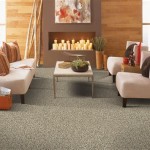High Quality Engineered Wood Flooring
Engineered wood flooring offers a compelling alternative to solid hardwood, providing comparable aesthetics with enhanced stability and versatility. Understanding the construction, benefits, and selection process empowers consumers to make informed decisions for their flooring needs.
Construction and Composition
Engineered wood flooring is constructed from multiple layers of wood veneers, bonded together with a high-quality adhesive. The top layer, known as the wear layer, consists of a thin slice of hardwood, providing the desired aesthetic and durability. Underlying the wear layer are multiple layers of plywood or high-density fiberboard (HDF), arranged in a cross-grained configuration. This construction enhances dimensional stability, minimizing expansion and contraction due to changes in temperature and humidity.
Benefits of Engineered Wood Flooring
The layered construction of engineered wood flooring yields several advantages over solid hardwood. Increased stability allows for installation in environments prone to moisture fluctuations, such as basements and kitchens. The ability to float, glue, or nail down engineered wood flooring provides installation flexibility, catering to various subfloor types and project requirements. Furthermore, the utilization of a relatively thin hardwood veneer conserves natural resources compared to solid hardwood flooring.
Species and Finishes
Engineered wood flooring offers a wide variety of wood species, catering to diverse aesthetic preferences. Popular choices include oak, maple, hickory, and walnut, each possessing unique grain patterns and color variations. Manufacturers apply various finishes to protect the surface of engineered wood flooring, ranging from traditional polyurethane to more environmentally friendly oil-based finishes. These finishes enhance durability, protect against scratches and stains, and simplify maintenance.
Thickness and Wear Layer
The overall thickness of engineered wood flooring influences its stability and suitability for specific applications. Thicker planks generally offer greater stability and can be sanded down and refinished multiple times, extending the lifespan of the floor. The thickness of the wear layer is a crucial factor in determining the floor's durability and refinishing potential. A thicker wear layer allows for more sanding and refinishing cycles, increasing the longevity of the floor's aesthetic appeal.
Installation Methods
Engineered wood flooring offers versatility in installation methods, accommodating various subfloor conditions and project requirements. Floating installations involve interlocking the planks, creating a “floating” floor above the subfloor. This method is suitable for concrete slabs and existing flooring, offering a relatively simple and quick installation process. Gluing down engineered wood flooring provides a more permanent and stable installation, particularly suitable for high-traffic areas. Nailing down engineered wood flooring is similar to solid hardwood installation and requires a wood subfloor.
Maintenance and Care
Proper maintenance ensures the longevity and aesthetic appeal of engineered wood flooring. Regular sweeping or vacuuming removes dust and debris, preventing scratches and wear. Promptly cleaning up spills prevents moisture damage and staining. Using furniture pads under the legs of chairs and tables minimizes scratching. Avoiding excessive moisture exposure, such as standing water, helps preserve the integrity of the flooring. Following manufacturer recommendations for cleaning products and procedures ensures optimal care and avoids damage to the finish.
Cost and Value
Engineered wood flooring offers a compelling value proposition, balancing cost, performance, and aesthetics. While the initial cost may vary depending on species, thickness, and finish, engineered wood flooring often presents a more budget-friendly option compared to solid hardwood. The enhanced stability and versatility of engineered wood allow for installation in a wider range of environments, potentially reducing installation costs. The longevity and refinishing potential of engineered wood flooring contribute to its long-term value, making it a worthwhile investment for homeowners.
Sustainability Considerations
The construction of engineered wood flooring, utilizing a thin hardwood veneer and layered plywood or HDF core, contributes to sustainable forestry practices. Choosing engineered wood flooring from manufacturers committed to responsible sourcing practices ensures that the wood originates from sustainably managed forests. Look for certifications such as the Forest Stewardship Council (FSC) label, which indicates that the wood comes from forests managed according to strict environmental and social standards. Choosing engineered wood flooring can be a responsible choice for environmentally conscious consumers seeking to minimize their impact on natural resources.

The 15 Best Engineered Wood Flooring Brands Reviews 2024 Flooringstores

Best Engineered Wood Flooring Options Forbes Home

What You Need To Know About Engineered Hardwood Flooring Renaissance Floors

Best Engineered Hardwood Floor For Scratch Resistance Lifecore Flooring Products

Bellawood Artisan 5 8 In Geneva White Oak Engineered Hardwood Flooring 7 Wide Ll

Engineered Wood Flooring Company Interiors Remembered

The 15 Best Engineered Wood Flooring Brands Reviews 2024 Flooringstores

Bellawood 3 8 In Bora Peak Hickory Engineered Hardwood Flooring 6 5 Wide Ll

The 15 Best Engineered Wood Flooring Brands Reviews 2024 Flooringstores

14 X 180mm Tanami Oak Brushed Oiled Engineered Wood Flooring








